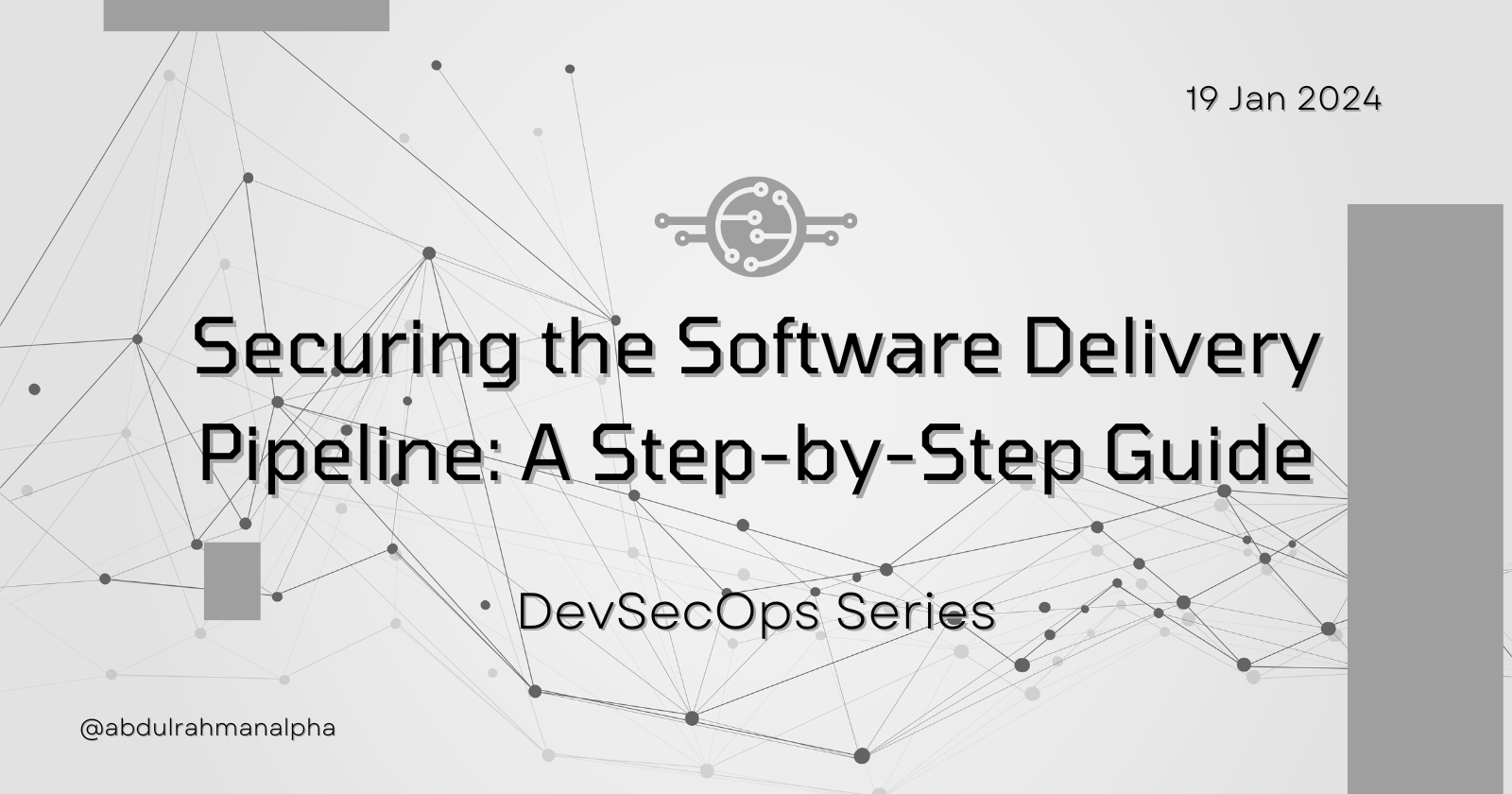Securing the Software Delivery Pipeline: A Step-by-Step Guide
 Abdulrahman Ahmad
Abdulrahman AhmadTable of contents
- Understanding the Stakes: Why Security in CI/CD Matters
- Step 1: Code Analysis and Static Application Security Testing (SAST)
- Step 2: Dependency Scanning and Software Composition Analysis (SCA)
- Step 3: Dynamic Application Security Testing (DAST) in Pre-Production
- Step 4: Continuous Monitoring and Post-Deployment Security
- Conclusion: A Secure Journey, Not a One-Time Task

In today's fast-paced development landscape, the integration of security measures into the software delivery pipeline is not just a necessity but a paramount responsibility. Continuous Integration/Continuous Deployment (CI/CD) pipelines are the lifelines of modern software development, and fortifying them with robust security practices is imperative. In this article, we'll embark on a journey to demystify the process of implementing security in CI/CD pipelines, unraveling practical insights and best practices along the way.
Understanding the Stakes: Why Security in CI/CD Matters
Before diving into the how-tos, let's comprehend why embedding security in CI/CD is crucial. CI/CD pipelines automate the process of code integration, testing, and deployment, significantly accelerating software delivery. However, this efficiency shouldn't compromise security. Without a robust security framework, vulnerabilities can slip through undetected, leading to potential disasters in production.
Step 1: Code Analysis and Static Application Security Testing (SAST)
The journey starts with the code. Implement Static Application Security Testing (SAST) tools directly into your CI/CD pipeline to analyze the source code for security vulnerabilities. Tools like SonarQube or Checkmarx can automatically scan your codebase, providing instant feedback to developers about potential security issues before the code is even merged.
Example: Imagine a scenario where a developer is pushing a new feature branch. As part of the CI process, SAST tools scan the code and flag a potential injection vulnerability. The developer receives immediate feedback, allowing them to rectify the issue before merging.
Step 2: Dependency Scanning and Software Composition Analysis (SCA)
Next, turn your attention to third-party dependencies. Integrating Dependency Scanning and Software Composition Analysis (SCA) tools like OWASP Dependency-Check ensures that your project's dependencies are free from known vulnerabilities. This step is crucial as many projects heavily rely on open-source libraries.
Example: Consider a case where a project uses a widely used open-source library. The SCA tool identifies that the version being used has a known security vulnerability. The CI/CD pipeline halts, prompting developers to update to a secure version before proceeding.
Step 3: Dynamic Application Security Testing (DAST) in Pre-Production
Now that the code is secure and dependencies are vetted, it's time for Dynamic Application Security Testing (DAST) in a pre-production environment. DAST tools, such as OWASP ZAP or Netsparker, simulate real-world attacks, identifying vulnerabilities in running applications.
Example: During the pre-production deployment phase, a DAST tool identifies a misconfigured security setting that could expose sensitive data. The pipeline automatically halts, ensuring that potential threats are addressed before reaching production.
Step 4: Continuous Monitoring and Post-Deployment Security
Security isn’t a one-time affair; it's an ongoing process. Implement continuous monitoring tools that keep a vigilant eye on your production environment. Tools like Prometheus and Grafana can provide real-time insights into your application’s security posture.
Example: A monitoring tool detects a sudden spike in unauthorized access attempts. Automated alerts notify the operations team, triggering an immediate investigation and the application of necessary security patches.
Conclusion: A Secure Journey, Not a One-Time Task
Incorporating security into CI/CD pipelines is not a one-time task but an ongoing journey. By weaving security into every phase of the development lifecycle, from code creation to post-deployment monitoring, organizations can proactively mitigate risks and safeguard their applications against evolving threats. As we continue to advance in the era of DevSecOps, integrating security seamlessly into CI/CD pipelines is not just a best practice; it's a prerequisite for secure and resilient software delivery.
Subscribe to my newsletter
Read articles from Abdulrahman Ahmad directly inside your inbox. Subscribe to the newsletter, and don't miss out.
Written by

Abdulrahman Ahmad
Abdulrahman Ahmad
🚀 Code. Automate. Innovate. Hi, I’m Abdulrahman, a passionate DevOps Engineer and Software Developer on a mission to bridge the gap between code and production. With a love for automation, cloud-native solutions, and cutting-edge tech, I turn complex problems into seamless, scalable systems. 💡 What I Do: Build robust CI/CD pipelines that deliver software at the speed of thought. Architect cloud infrastructure that scales with a single command. Transform manual processes into automated workflows that just work. Break down silos and foster collaboration between teams. 🔧 Tech Stack I ❤️: Containers (Docker), Orchestration (Kubernetes), Infrastructure as Code (Terraform), CI/CD (Jenkins, GitLab), Cloud (AWS/GCP/Azure), and scripting like it’s my superpower. 📝 Why This Blog? This is where I share my journey, lessons learned, and the latest trends in DevOps and software engineering. Whether you're a seasoned pro or just starting out, join me as we explore the tools, tricks, and best practices that make the tech world tick. 🌟 Let’s Build the Future, One Pipeline at a Time. Connect with me, share your thoughts, and let’s automate the world together!